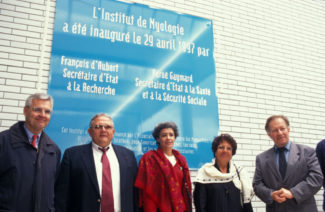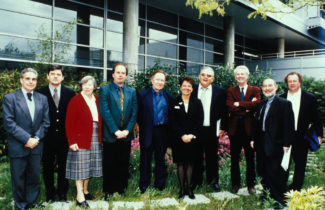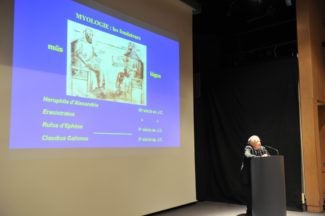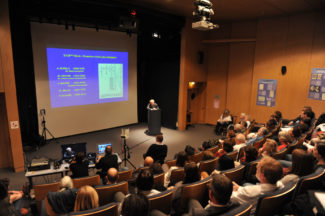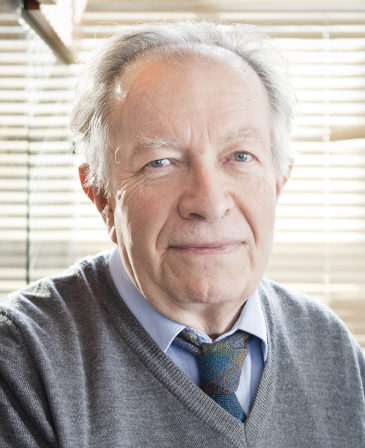
Michel Fardeau passed away on 6 December at the age of 95.
A medical researcher, he began his career as a Clinic Director at Paris Hospitals before working at the end of the 1960s at the National Institutes for Health (NIH) in Bethesda, in the United States, with his American counterpart King W Engel, with whom he laid the foundations for neuromuscular histological exploration using electron microscopy.
He then set up his electron microscopy laboratory at the Pitié-Salpêtrière hospital, which became a CNRS research team in 1971 and then an Inserm research unit from 1976 to 1998. This was to be the foundation stone of the Institute of Myology, created by the AFM in 1996, and which he directed from its creation, as Medical and Scientific Director, for many years.
From the outset, the aim of the Institute was to coordinate medical care, basic research, applied research, clinical research and teaching around the patient.
In addition to the consultation service, which continues to operate, the Institute has created a teaching channel, with the first lesson in myology given by Prof. Michel Fardeau at the opening of the University Diploma in Neuromuscular Pathology in 1996.
On the research side, the Inserm U153 unit moved into the Institute of Myology and, in 1998, the Institute set up the 1st Myology Summer School to teach myology to students and doctors from all over the world.
Michel Fardeau has dedicated his life to the clinical and morphological analysis and treatment of dozens of neuromuscular diseases, in particular congenital myopathies, cardiomyopathies, severe childhood myopathies, congenital muscular dystrophies and limb-girdle muscular dystrophies. The detection and treatment of these genetic diseases owes much to his pioneering work.
He played a pioneering role in several world premieres in cell transplantation and gene therapy. He was the expert hand that, for the first time in the world, in the early 2000s, administered a gene-drug to patients suffering from Duchenne muscular dystrophy, so dear to his heart.
Just a few weeks ago, he wrote of his joy at still being here to see the spectacular progress that has since been made in this field.
His pioneering role and immense expertise have led him to chair a number of university Scientific Councils, both in France and abroad. He was a member of the Comité Consultatif National d’Éthique (1986-1990) and then Chairman of the Comité d’Éthique en Recherche Médicale et en Santé (2000-2003). He also chaired the AFM’s very first scientific council from 1982 to 1986. The learned societies and the American and French Academies of Science were open to him, and his many awards and decorations bear witness to the recognition he is due.
‘Michel Fardeau had a clear and precise vision of the needs of patients in terms of both care and research. This was one of the dimensions he gave to myology, the recognition of which he promoted as a medical and scientific discipline. His vision of myology was broad and international, a vision shared by his many colleagues around the world, many of whom admired his work,’ emphasises Bertrand Fontaine, Medical and Scientific Director of the Institute of Myology.
